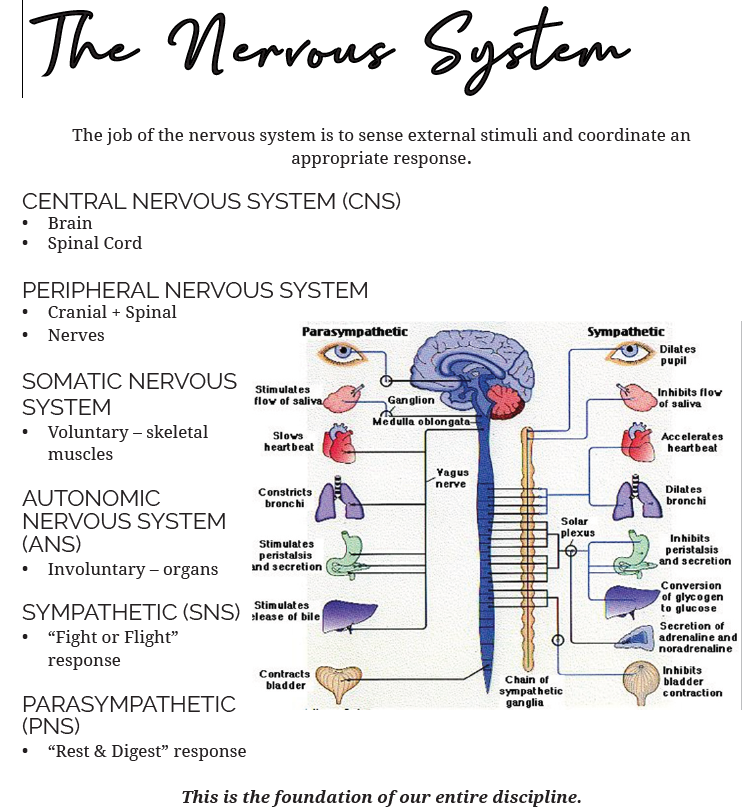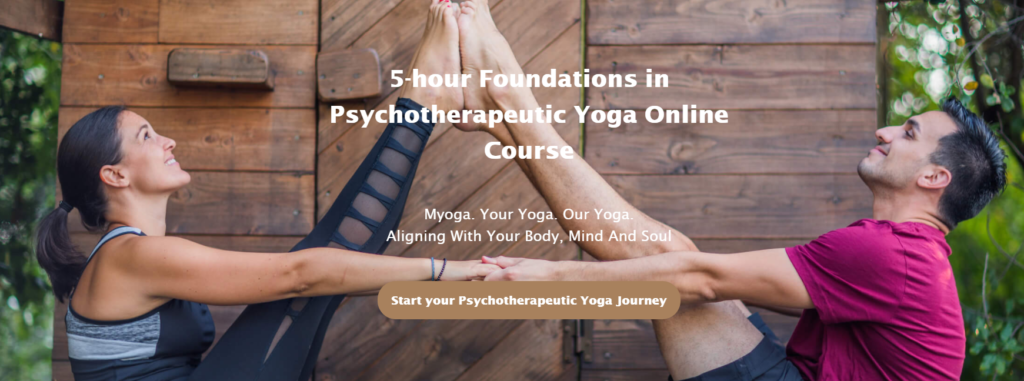How Yoga can help regulate your nervous system
Your nervous system is your body’s command center. Originating from your brain, it controls your movements, thoughts, and automatic responses to the world around you. It also controls other body systems and processes, such as digestion, breathing, and sexual development. Diseases, accidents, toxins, and the natural aging process can damage your nervous system. Here we will learn how yoga can help you regulate your nervous system to keep it balanced and healthy.
Our nervous system uses specialized cells called neurons to send signals, or messages, all over your body. These electrical signals travel between your brain, skin, organs, glands and muscles.
The main parts of the nervous system are:
-
- Central nervous system (CNS): Your brain and spinal cord make up your CNS.
-
- Peripheral nervous system: This system relays information from your brain and spinal cord to your organs, arms, legs, fingers and toes. Your peripheral nervous system contains your:
-
- Somatic nervous system, which guides your voluntary movements.
-
- Autonomic nervous system, which controls the activities you do without thinking about them.

The autonomic nervous system
The autonomic nervous system is a component of the peripheral nervous system that regulates involuntary physiologic processes including heart rate, blood pressure, respiration, digestion, and sexual arousal. It contains three anatomically distinct divisions: sympathetic, parasympathetic, and enteric.
It is our autonomic nervous system that is involved in our ability to feel emotions. It is located in our bodies, not in our minds. 80% of nerve fibers send information from the body to the brain, only 20% is brain to body.
What is happening when we have a fight or flight response? We are activating the Sympathetic nervous system! What happens when your stress response never shuts off? When you are stuck in sympathetic mode, the stress response is invoked almost constantly (even at a lower intensity).
When we are stuck in a sympathetic nervous system, we are on a flight or fight mode. Science confirms that our minds and bodies are brilliant, beautiful systems organized around a primary purpose: You experience this self-protection via your autonomic nervous system. The threat detector (along with other brain function) communicate danger to your body.
The threat detector says, “I detect danger!” To which your ANS responds, “Not a problem, I’m here to protect you!” and comes to your aid in the form of either fight/flight/freeze. You may experience these things as:
-
- Anger, rage, fear, frustration, body wants to move, increased adrenaline and cortisol
-
- Heightened alertness in all senses, laser focused vision, sensitivity to sound
-
- Anxiety, panic attacks, the need to control external circumstances
-
- Disrupted sleep, bursts of energy and then fatigueCommon sensations: increased heart rate, heavy breathing, muscle rigidity, tightness in chest, shaking, perspiration, dizziness, fainting, sweaty palms, overall tightness, heat, shaking, fidgety, too much energy, light headed, clenching, exploding like sensations, etc.
We have to show our protective parts we are safe, not just tell them. Ever wonder why you don’t feel better when you tell yourself to “just calm down” or “everything is fine”? That’s because your Autonomic Nervous System and the parts of your brain online when you are activated do not understand cognition or language.
To do so we can:
-
- Yoga can help you regulate your nervous system with Specific Yoga poses such as forward bending, twisting and inversion: The parasympathetic ganglia are located and move out from the cervical spine and the sacrum, it includes the brain as well. Through forward bending, twisting, and inversion, the nerves are activated, and blood vessels dilate helping to balance sympathetic stimulation. The mind becomes more calm, anxiety is decreased, and blood pressure is lowered.
-
- Pranayama ratio: Increase exhalation and Short suspension after exhale
-
- Dancing and singing such as ecstatic dances, moving freely, mantras, etc.
-
- Active sport
-
- The body needs to get the energy out of the body
What is happening when we have a rest and digest response? We are activating the Parasympathetic nervous system!
Over time, should one be stuck in sympathetic functioning, the body will try to conserve itself by recruiting the parasympathetic nervous system. This shows up as anxiety cascading into depression – the end stage of sympathetic burnout. People in this condition have exhausted their sympathetic systems so much, their bodies resort to a default parasympathetic state. The body doesn’t recognize that we could put ourselves in a safe place and slowly shut down.
The results are:
-
- Being tired, apathetic, and tendency to get depressed easily,
-
- Behavior patterns such as fearfulness, apathy and even despair,
-
- Low energy states,
-
- Hopelessness, numbness, dissociation, etc
The vagus nerve makes up 75% of the fibers in the parasympathetic nervous system (PNS), the part of our autonomic nervous system that allows us to have better sleep, mental calm, and tranquility. When we nourish and improve the “tone” of our vagus nerve we enjoy greater contentment and ability to connect, less pain and anxiety, and improved sleep patterns.
Our vagus nerve is an information network that spreads from head to pelvis, carrying information from our body to brain and from brain to body.
What to do to work with this nerve and upregulate our nervous system?
-
- Yoga poses such as Backbend and laterals: The sympathetic ganglia are located and move out of the thoracic and lumbar vertebrae. They have a stimulating effect on the heart, thymus, and adrenal glands, preparing us for fight, flight or freeze. Backbends and laterals are good to activate and alleviate symptoms of depression and low blood pressure.
-
- Pranayama ratio: Increasing inhalation and retention after inhale
-
- Sound: The vagus nerve is connected to your vocal cords and the muscles at the back of your throat. Singing, humming, chanting and gargling can activate these muscles and stimulate your vagus nerve. And this has been shown to increase heart rate variability and vagal tone.
-
- Cold: Stimulating the vagus nerve may be as simple as drinking ice water, taking a cold shower, or splashing cold water on your face.
-
- Meditation and Prayer: Meditation and prayer helps to create good feelings overall while at the same time improving vagal tone.
-
- Massage: It stimulates the vagus nerve by massaging your ears and scalp or give yourself a foot massage.
To learn more about how yoga can help you regulate your nervous system, you have different possibilities:
– Download now our FREE e-booklet on how to balance your emotions through pranayamas/breathwork!
– Learn with us the basic steps through our 5-hour Foundations in Psychotherapeutic Yoga Online Course. The course is divided into 3 main topics: Psychotherapeutic Yoga, Ayurveda and Meditation for beginners.









